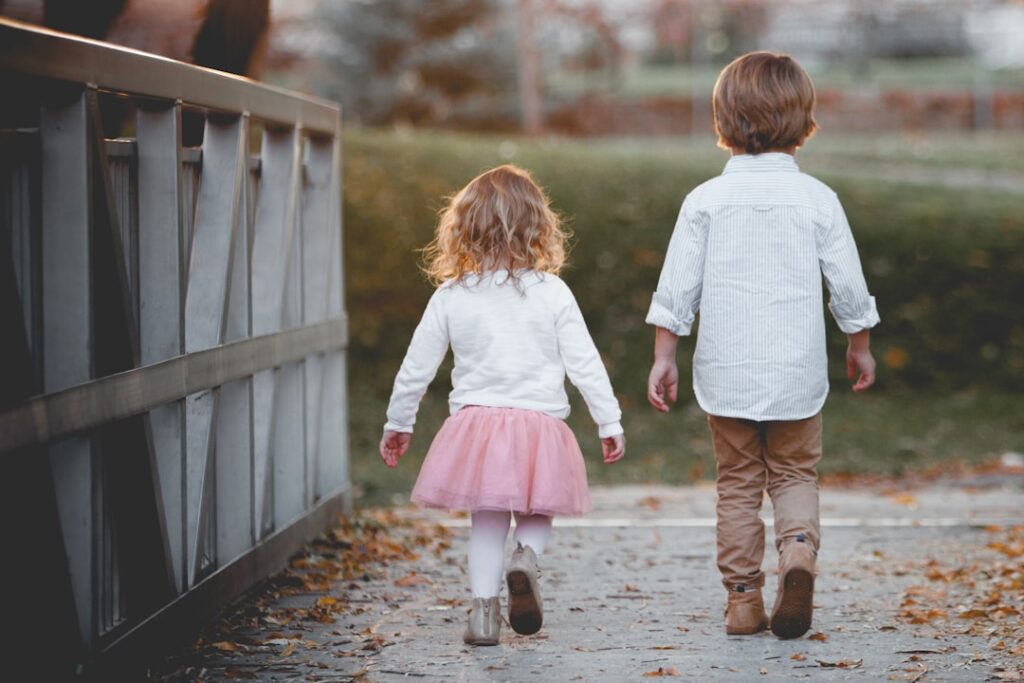Chalk drawings have a rich and diverse history that dates back to ancient times. The use of chalk as a drawing medium can be traced back to the early cave paintings created by our ancestors. These early artists used natural pigments, including chalk, to create images on the walls of caves, depicting scenes from their daily lives and the natural world around them. As time progressed, chalk continued to be used as a drawing medium in various cultures and civilizations, including ancient Egypt, Greece, and Rome.
During the Renaissance period, chalk drawings gained popularity as a medium for creating detailed and expressive artwork. Artists such as Leonardo da Vinci and Michelangelo utilized chalk to create stunning portraits and studies, showcasing the versatility and beauty of this medium. Chalk drawings also became a popular form of expression in the 18th and 19th centuries, with artists using chalk to create landscapes, still life compositions, and figure studies. In more recent times, chalk drawings have found a new platform for expression in public spaces, with street artists and muralists using chalk to create temporary works of art that captivate and inspire audiences around the world.
Key Takeaways
- Chalk drawings have a long history dating back to ancient times, with evidence of their use in cave paintings and ancient Roman art.
- Chalk drawings can enhance creativity by providing a tactile and versatile medium for artistic expression.
- Tips for creating chalk drawings include using a variety of colors, blending techniques, and experimenting with different surfaces such as pavement or chalkboards.
- Chalk drawings can have a positive impact on public spaces by adding color and vibrancy, and can also be used for temporary or interactive art installations.
- Chalk drawings are a popular form of street art, often used for temporary and ephemeral expressions of creativity in urban environments.
- Chalk drawings are increasingly being used in education and therapy settings to promote creativity, self-expression, and stress relief.
- The future of chalk drawings may involve innovations such as augmented reality integration, interactive installations, and new techniques for creating and preserving chalk art.
The Benefits of Chalk Drawings for Creativity
Chalk drawings offer a wide range of benefits for individuals looking to express their creativity and artistic talents. One of the key benefits of working with chalk is its versatility as a medium. Chalk can be used on a variety of surfaces, including paper, sidewalks, walls, and chalkboards, allowing artists to explore different textures and techniques in their work. This versatility also makes chalk drawings accessible to people of all ages and skill levels, making it an inclusive and engaging form of artistic expression.
In addition to its versatility, chalk drawings also offer a unique tactile experience for artists. The act of drawing with chalk involves a physical connection between the artist and the medium, allowing for a more immediate and expressive form of creativity. The soft texture of chalk allows for smooth blending and shading, while also providing the opportunity for bold and dynamic mark-making. This tactile experience can be particularly beneficial for individuals looking to explore new ways of expressing themselves artistically and tapping into their creative potential.
Tips and Techniques for Creating Chalk Drawings
Creating stunning chalk drawings requires a combination of skill, technique, and creativity. Whether you’re a beginner or an experienced artist, there are several tips and techniques that can help you make the most of this versatile medium. When working with chalk, it’s important to start with a clean and smooth surface. Whether you’re using paper or a sidewalk, make sure the surface is free of debris and dirt to ensure that your chalk drawings come out looking vibrant and polished.
Another important technique for creating chalk drawings is to experiment with different types of chalk and pastels. Soft pastels are ideal for blending and creating smooth gradients, while harder chalks can be used for adding fine details and texture to your drawings. By experimenting with different types of chalk, you can discover new ways to create depth and dimension in your artwork. Additionally, consider using fixatives to preserve your chalk drawings and prevent smudging. Fixatives can help protect your artwork from smearing or fading over time, allowing you to showcase your creations for years to come.
The Impact of Chalk Drawings on Public Spaces
| Location | Number of Drawings | Public Response |
|---|---|---|
| Park | 50 | Positive, increased foot traffic |
| Sidewalks | 30 | Mixed, some complaints about cleanliness |
| Schools | 20 | Highly positive, increased sense of community |
Chalk drawings have had a profound impact on public spaces around the world, transforming sidewalks, plazas, and urban landscapes into vibrant canvases for artistic expression. One of the key impacts of chalk drawings in public spaces is their ability to engage and inspire communities. Whether it’s a colorful mural or an intricate sidewalk drawing, chalk art has the power to captivate audiences of all ages and backgrounds, sparking conversations and fostering a sense of connection within communities.
Furthermore, chalk drawings have the potential to transform mundane urban environments into dynamic and visually stimulating spaces. By adding bursts of color and creativity to sidewalks and public plazas, chalk art has the ability to enhance the aesthetic appeal of urban landscapes, making them more inviting and enjoyable for residents and visitors alike. In addition to their aesthetic impact, chalk drawings also have the potential to raise awareness about important social issues and causes. Street artists often use chalk as a medium for conveying powerful messages about environmental conservation, social justice, and community empowerment, using their art as a platform for advocacy and activism.
Chalk Drawings as a Form of Street Art
Chalk drawings have emerged as a popular form of street art, with artists using public spaces as their canvas to create temporary works of art that captivate and inspire audiences. Unlike traditional forms of street art that are often permanent or semi-permanent, chalk drawings offer a unique ephemeral quality that adds an element of spontaneity and impermanence to the art form. This temporary nature of chalk art allows artists to experiment with new ideas and concepts without the pressure of creating a lasting masterpiece, giving them the freedom to take risks and push the boundaries of their creativity.
Chalk drawings also offer a more accessible form of street art that can be enjoyed by people from all walks of life. Unlike traditional murals or graffiti that may require specialized materials or techniques, chalk art can be created using simple tools such as sidewalk chalk or soft pastels, making it an inclusive and engaging form of artistic expression. This accessibility allows for greater participation and interaction with the art form, as viewers are encouraged to engage with the artwork directly by walking through or around it, adding an interactive element to the experience.
Chalk Drawings in Education and Therapy

Chalk drawings have been utilized in educational settings and therapeutic practices as a means of promoting creativity, self-expression, and emotional healing. In educational settings, chalk drawings are often used as a tool for teaching art fundamentals such as color theory, perspective, and composition. The tactile nature of working with chalk also provides students with a hands-on learning experience that can enhance their understanding of artistic concepts and techniques. Additionally, creating chalk drawings can help students develop fine motor skills and hand-eye coordination, making it a valuable tool for early childhood development.
In therapeutic settings, chalk drawings have been used as a form of art therapy to help individuals process emotions, reduce stress, and improve mental well-being. The act of creating art with chalk can provide a nonverbal outlet for self-expression, allowing individuals to communicate their thoughts and feelings in a visual and symbolic manner. The tactile experience of working with chalk can also be soothing and grounding for individuals experiencing anxiety or trauma, providing a therapeutic outlet for emotional release and self-reflection.
The Future of Chalk Drawings: Innovations and Trends
As the popularity of chalk drawings continues to grow, artists are exploring new innovations and trends within the medium to push the boundaries of what is possible with chalk art. One emerging trend is the use of digital technology to create interactive chalk art installations. Artists are incorporating augmented reality (AR) technology into their chalk drawings, allowing viewers to use their smartphones or tablets to unlock hidden animations or interactive elements within the artwork. This fusion of traditional art forms with digital technology offers new possibilities for engaging audiences and creating immersive art experiences in public spaces.
Another trend within the world of chalk art is the exploration of environmental sustainability. With growing concerns about environmental conservation, artists are seeking out eco-friendly alternatives to traditional sidewalk chalk that may contain harmful chemicals or additives. Some artists are experimenting with natural pigments and dyes derived from plant-based materials to create vibrant and environmentally friendly chalk drawings that leave minimal impact on the surrounding ecosystem.
In conclusion, chalk drawings have a rich history that spans across cultures and civilizations, offering a versatile medium for artistic expression. From its origins in ancient cave paintings to its modern-day impact on public spaces and street art, chalk drawings continue to captivate audiences with their ephemeral beauty and tactile allure. Whether used in education, therapy, or as a form of street art, chalk drawings offer a myriad of benefits for individuals looking to tap into their creativity and express themselves in new and exciting ways. As artists continue to innovate and explore new trends within the medium, the future of chalk drawings holds endless possibilities for engaging audiences and pushing the boundaries of artistic expression.
Sure, here’s a paragraph including a mention of a related article to chalk drawings and a link to watchesgreat.com:
“Chalk drawings have been gaining popularity as a form of temporary art, with artists creating stunning masterpieces on sidewalks and public spaces. The intricate details and vibrant colors of these chalk creations never fail to captivate onlookers. If you’re interested in exploring more forms of artistic expression, you might also enjoy reading about the timeless elegance of luxury watches on watchesgreat.com. Discover the craftsmanship and beauty of these exquisite timepieces that are truly works of art in their own right.”
FAQs
What are chalk drawings?
Chalk drawings are artistic creations made using chalk as the medium. They are often created on sidewalks, pavement, or chalkboards.
What type of chalk is used for chalk drawings?
Chalk drawings are typically made using soft, pastel-like chalk sticks. These chalk sticks are easy to blend and create vibrant colors on a variety of surfaces.
Where are chalk drawings commonly found?
Chalk drawings are commonly found on sidewalks, pavement, and chalkboards. They are often seen in urban areas, at schools, and at art festivals.
How are chalk drawings created?
Chalk drawings are created by using chalk sticks to draw and color on a surface. Artists often use blending techniques to create depth and shading in their drawings.
Are chalk drawings permanent?
Chalk drawings are not permanent and can be easily washed away with water or rain. This ephemeral nature adds to the charm and temporary beauty of chalk art.
What are some famous examples of chalk drawings?
Famous examples of chalk drawings include street art by renowned artists such as Julian Beever and Edgar Mueller, who create stunning 3D illusions on pavement using chalk.


